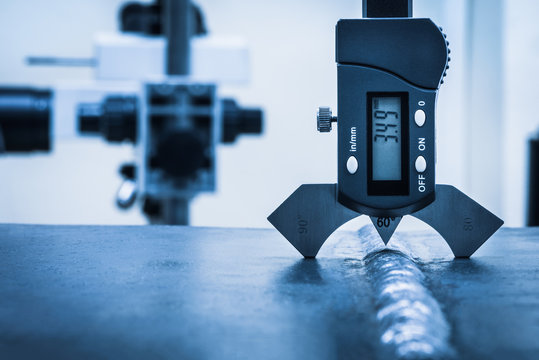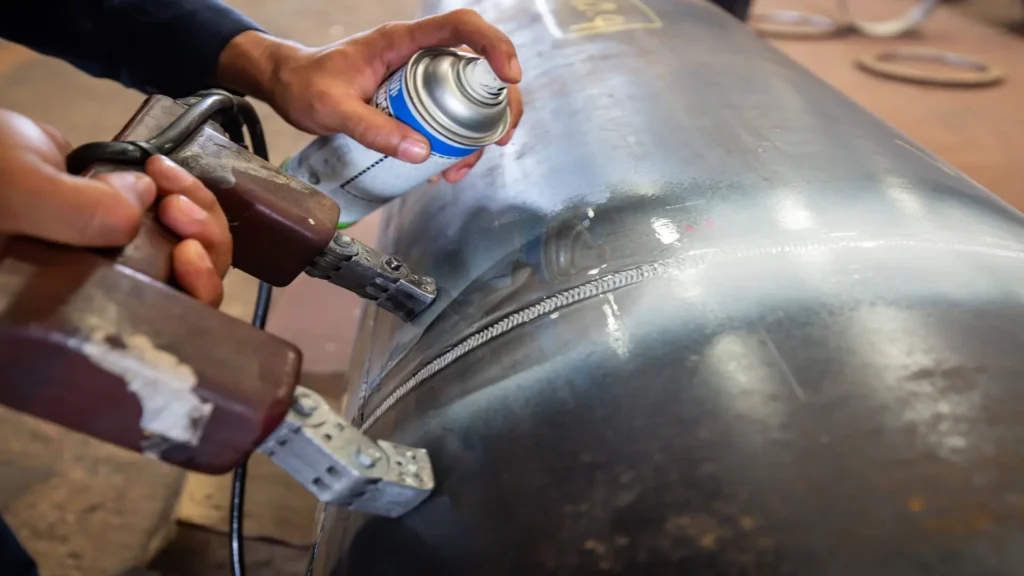Understanding the Value of Welding Inspection Madison in Building
Understanding the Value of Welding Inspection Madison in Building
Blog Article
Just How Efficient Welding Inspection Enhances Structural Stability and Long Life
In the realm of building and construction and engineering, the value of welding examination can not be overstated, as it plays a critical function in making sure architectural integrity and extending the life expectancy of tasks. By releasing a series of innovative evaluation strategies, such as radiographic and ultrasonic screening, professionals can identify flaws that could endanger the dependability of a structure. However, the concern stays: just how do these meticulous procedures convert into tangible benefits for sturdiness and safety and security? Sign up with the expedition of exactly how effective welding evaluations can transform possible susceptabilities into staminas, contributing to the enduring success of constructions.
Relevance of Welding Examination
Making sure the architectural honesty and safety and security of welded constructions mandates rigorous welding evaluation processes. Welding evaluation offers as a crucial safeguard in the building and manufacturing markets, where the toughness and durability of joints considerably affect the general efficiency of frameworks.
Along with safety, welding assessment plays an important function in high quality assurance. By sticking to fixed requirements, evaluations determine the uniformity of welds, guaranteeing that each satisfies the wanted toughness and aesthetic needs. This uniformity is crucial not only for safety yet also for keeping the track record and dependability of builders and suppliers. Governing compliance is a substantial chauffeur of welding examination methods. Industry requirements and codes, such as those from the American Welding Culture (AWS) or the International Organization for Standardization (ISO), demand adherence to strict standards, underscoring the value of inspections in satisfying these lawful and professional responsibilities.
Key Evaluation Methods

Ultrasonic Testing (UT) utilizes high-frequency acoustic waves to spot subsurface flaws, providing precise details regarding weld honesty without triggering any type of damage. Radiographic Checking (RT), including X-rays or gamma rays, gives a thorough picture of the weld's internal structure, disclosing covert blemishes. Magnetic Particle Checking (MPT) is another non-destructive technique, specifically effective for spotting surface area and near-surface interruptions in ferromagnetic products.
Penetrant Testing (PT) entails the application of a liquid color to reveal surface-breaking problems, using a uncomplicated and affordable solution for non-porous materials. Each method has its details applications, strengths, and restrictions, and usually a combination of approaches is employed to accomplish thorough evaluation outcomes. Proficiency of these strategies enhances the integrity and durability of welded frameworks, lining up with safety and security and performance assumptions.
Identifying Common Issues

Porosity, characterized by gas pockets within the weld, minimizes the weld's strength and resilience. Cracks, which can occur during or after welding, posture significant threats due to their possible to circulate under tension.
Insufficient blend, where the weld steel stops working to bond totally with the base material, undermines the architectural honesty, causing weak joints. go to these guys This flaw commonly originates from not enough warm input or improper welding strategy. Slag incorporations happen when non-metallic materials are trapped in the weld, jeopardizing its stamina and quality. These are often an outcome of poor cleaning in between weld passes or incorrect flux use.
Recognizing these problems via thorough examination approaches, such as visual examination, ultrasonic screening, or radiography, is vital. Attending to these concerns makes sure weld quality, inevitably sustaining the architectural stability and safety and security of the built setting.

Enhancing Structural Performance
Comprehending the importance of identifying common weld defects normally leads to discovering techniques for improving structural efficiency. The fundamental technique for enhancing performance requires utilizing sophisticated welding techniques and products that alleviate problem incident. Utilizing high-quality filler products and making sure proper heat control can considerably minimize issues such as porosity and fracturing, consequently improving the weld's integrity.
Integrating cutting edge welding modern technologies, such as laser welding and friction stir welding, additional amplifies architectural resilience. These strategies use superior precision and reduced thermal distortion, straight influencing the longevity and toughness of the bonded frameworks. Moreover, adopting automated welding systems can make sure repeatable and regular weld high quality, minimizing human error.
In addition, carrying out rigorous pre-weld and post-weld procedures is vital. Correct joint design, surface area preparation, and stress-relieving processes add to optimum weld performance. Carrying out thorough pre-weld assessments enables very early detection of possible concerns, facilitating timely adjustments prior navigate here to they compromise the structure.
Long-term Benefits of Inspection

With alert inspection methods, the long-lasting advantages to structural honesty become significantly noticeable. Complete and constant welding assessments play an important role in stopping architectural failures by identifying variances and issues early in the building procedure.
Additionally, normal inspections contribute to preserving compliance with market criteria and laws, thereby preventing lawful and monetary effects. This adherence to quality control not just boosts the integrity of the framework but likewise cultivates trust among stakeholders, including clients, designers, and governing bodies. The comprehensive documentation of inspection outcomes works as a useful source for future upkeep and repair service initiatives, facilitating notified decision-making.
On top of that, effective inspection methods support innovation by including innovative modern technologies such as non-destructive screening and digital imaging, which can enhance accuracy and efficiency. This technological integration even more underscores the dedication to quality in structural integrity. Ultimately, buying careful welding assessments is a prudent approach that generates considerable long-term advantages, safeguarding both the physical and financial investment in infrastructure tasks.
Verdict
Efficient welding evaluation plays an essential function in enhancing structural honesty and durability by identifying flaws early in the building procedure. Making use of methods such as visual assessment, ultrasonic testing, and radiographic testing makes sure the detection of problems like cracks and porosity that jeopardize weld toughness. Strenuous assessments ensure compliance with sector standards, thereby extending the lifespan of structures, lessening costly fixings, and click for more info promoting stakeholder trust fund in the reliability and security of bonded buildings.
In the realm of building and design, the importance of welding evaluation can not be overemphasized, as it plays a critical duty in ensuring structural stability and prolonging the life expectancy of tasks.Making sure the structural integrity and security of bonded buildings mandates extensive welding examination procedures.Structure upon the significance of welding examination in safeguarding structural integrity, understanding the essential evaluation strategies comes to be vital for effective implementation. Efficient welding assessment includes a variety of techniques developed to assess weld top quality, ensuring conformity with strict engineering standards - Welding Inspection Madison.Effective welding inspection plays a vital duty in boosting architectural stability and longevity by identifying defects early in the building process
Report this page